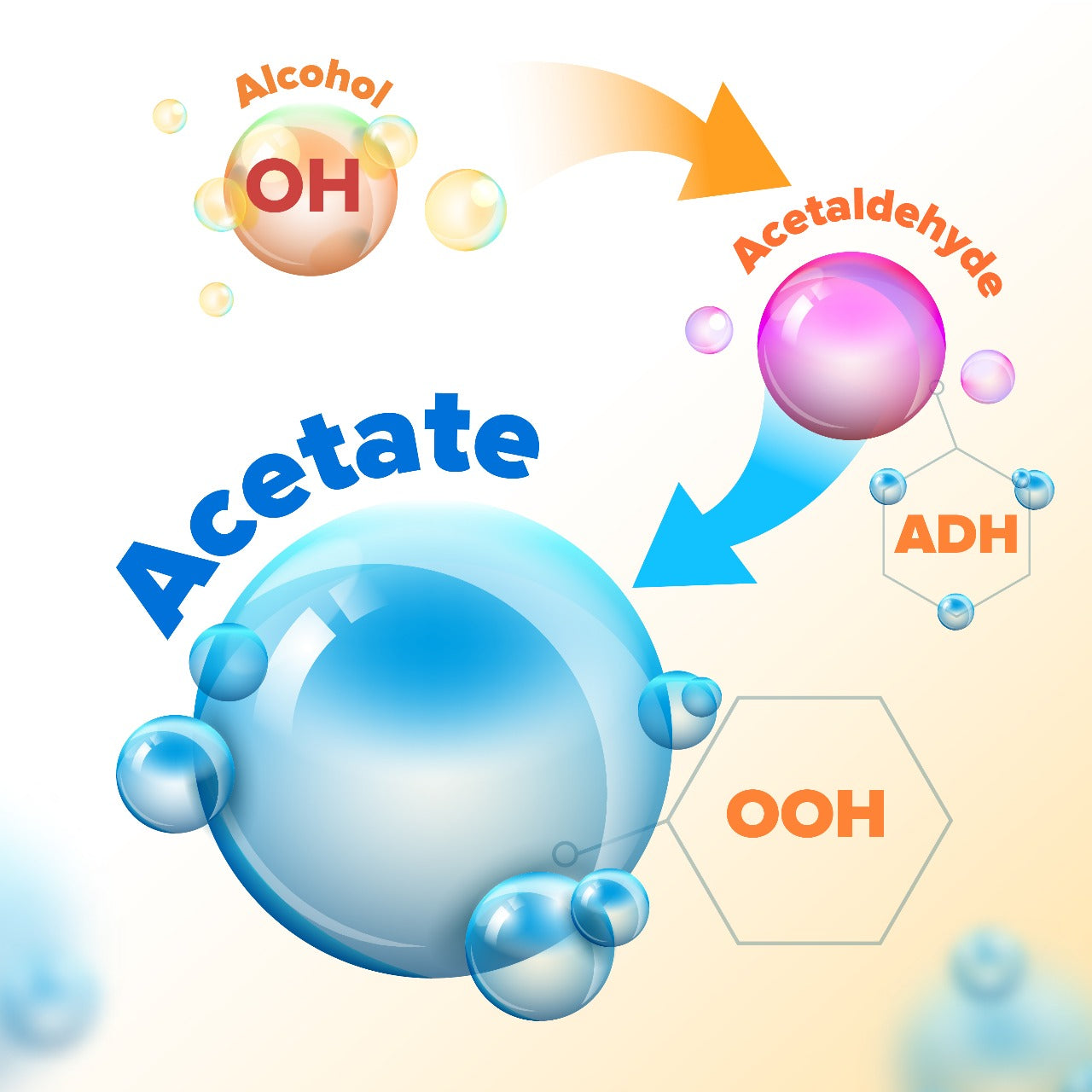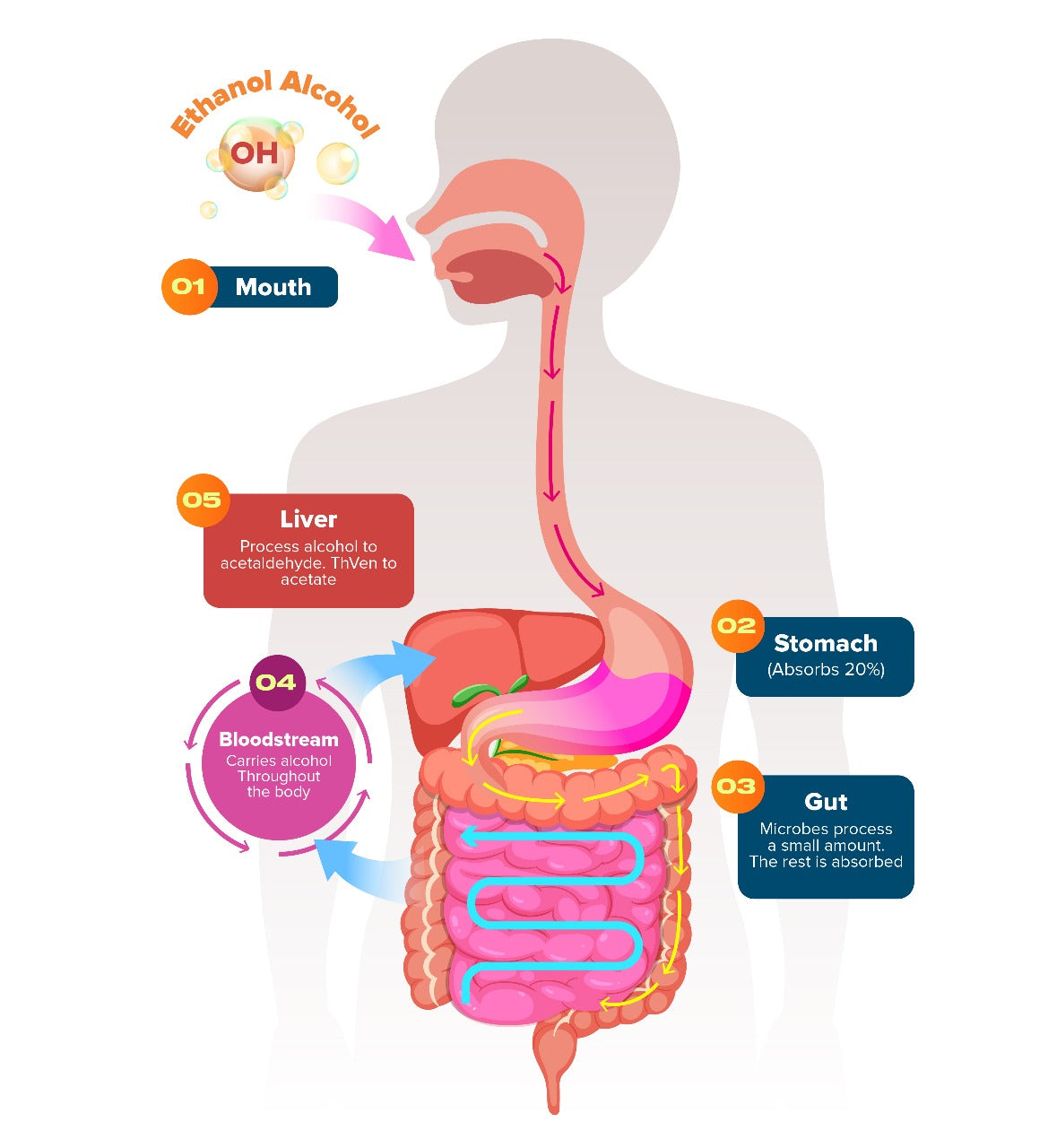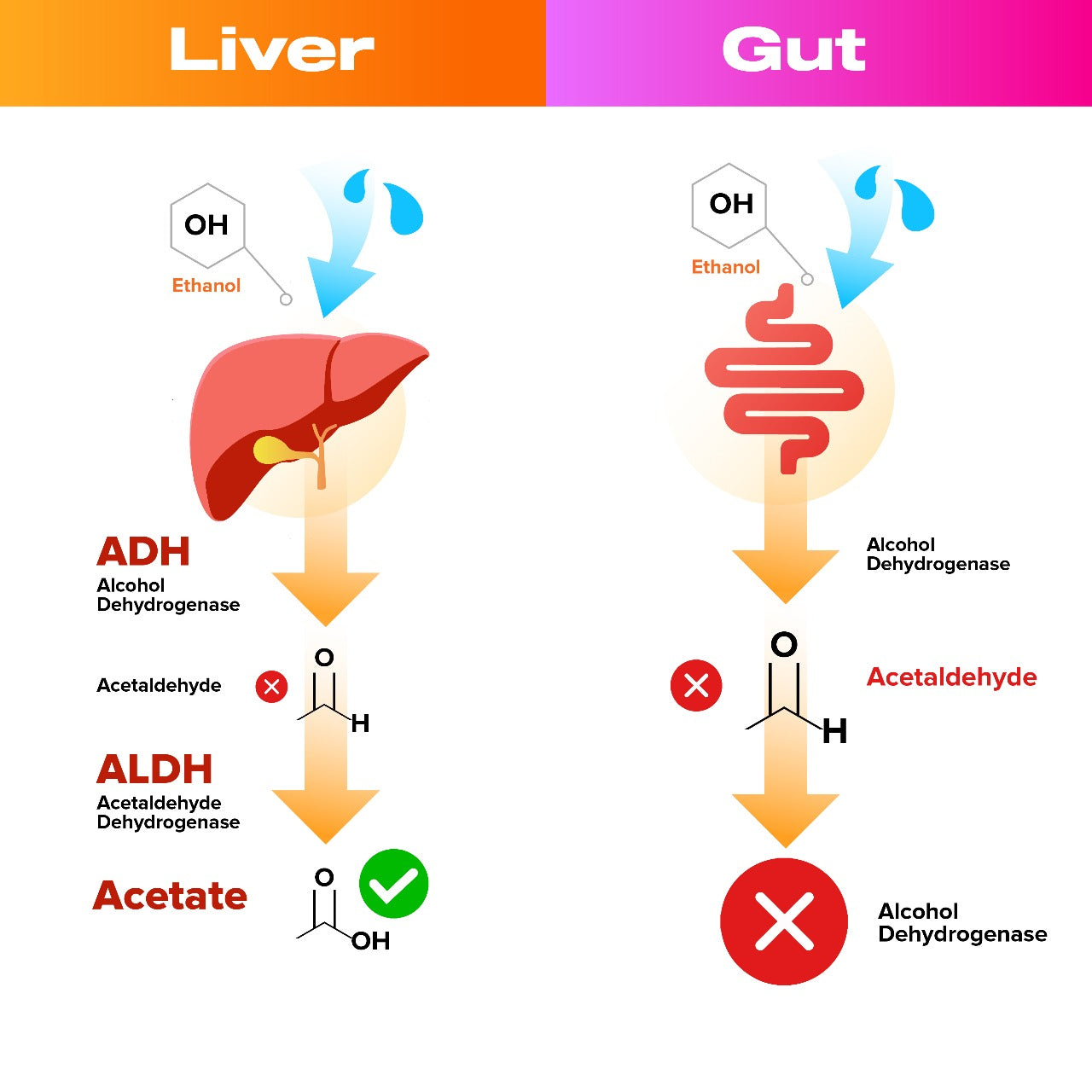
How your body breaks down alcohol
Understanding the science behind what happens after your first sip
Ever wonder what actually happens inside your body when you drink? To truly support recovery, it’s important to understand how alcohol is processed — and where the trouble starts.
The biochemistry behind alcohol metabolism
When we talk about “alcohol” in this context, we’re referring to ethanol, the molecule found in beer, wine, and spirits. Once alcohol enters your system, your body begins a two-step process to break it down:

1. Alcohol → Acetaldehyde
Enzyme: Alcohol Dehydrogenase (ADH)
This step converts alcohol into acetaldehyde — a highly toxic byproduct.
2. Acetaldehyde → Acetate
Enzyme: Acetaldehyde Dehydrogenase (ALDH)
This final step neutralizes the toxin, converting it into acetate (essentially vinegar), which is harmless and easily flushed from your system.
These reactions happen quickly, but not always efficiently — and that’s where the problems start.
How does the body metabolize alcohol
Your liver – the major site of alcohol metabolism
The liver is your body’s main alcohol-processing organ. After alcohol is absorbed from your gut into your bloodstream, the liver works to detoxify it through the enzyme reactions mentioned above.

The basic path of alcohol through the body is:
1. Mouth (Ingestion):
It all begins when you take a sip. Alcohol enters through your mouth and heads down into your digestive system.
2. Stomach:
Roughly 20% of the alcohol you consume is absorbed directly through the lining of your stomach. If you’ve eaten, this process slows down—food delays alcohol’s movement into your intestines.
3. Intestines (Gut):
The remaining alcohol moves into your small and large intestines—collectively referred to here as your “gut.” Most of the alcohol is absorbed here into your bloodstream. A smaller amount is broken down right in the gut by your microbiome (we’ll cover this more shortly).
4. Bloodstream:
Once absorbed, alcohol enters your bloodstream and is carried throughout your body, affecting your brain, muscles, and other organs. This is where you feel the typical effects of drinking—intoxication, relaxation, hunger, etc.
5. Liver:
Finally, the alcohol reaches your liver—the body’s main detox center. Here, it’s processed through two steps: first, ethanol is converted to acetaldehyde by the enzyme alcohol dehydrogenase (ADH). Then, acetaldehyde is quickly converted to acetate by the enzyme acetaldehyde dehydrogenase (ALDH).
Your liver is highly efficient at this process, and in most cases, little to no acetaldehyde escapes into the body because it’s converted almost immediately.
Importantly, almost none of the intermediate acetaldehyde escapes the liver; nearly all of it is immediately processed to acetate via the liver pathway.* However, the same is not true in the gut.
*It’s also important to note that around 8% of people worldwide have a genetic variation that limits ALDH production in the liver as well. For these individuals, acetaldehyde can build up in both the gut and the liver, intensifying their reaction to alcohol (see supporting research).

But the gut tells a different story
What’s often overlooked is that a small portion of alcohol gets processed directly in your gut (see research)— and this is where issues arise. The microbes in your gut (your microbiome) can also convert alcohol into acetaldehyde (see research), but they don’t produce enough of the enzyme ALDH to finish the detox process.
-
This means acetaldehyde builds up in your gut, and can reach levels 5–10x higher than in the rest of your body.
This build-up is where many hangover symptoms originate — headaches, nausea, brain fog, and fatigue. Since your gut can’t keep up, that toxic load spills into your bloodstream and causes stress throughout your body the next day.
Why this matters for hangover recovery
The difference between how your liver and gut handle alcohol is at the heart of why we developed DrinkDefendly. Our formula is designed to support your body where it struggles most: clearing gut-derived toxins like acetaldehyde before they overwhelm your system.
By combining clinically studied ingredients like Dihydromyricetin (DHM), Milk Thistle, and others, Drink Defendly helps your body neutralize toxins more efficiently — supporting liver function, soothing digestion, and helping you wake up feeling fresh, not foggy.
In summary
Every time you drink, your body kicks into detox mode. Alcohol is processed in two key steps: first, it’s converted into acetaldehyde — a toxic compound. Then, acetaldehyde is broken down into acetate, a harmless substance your body can easily handle.
Your liver is great at this. It has the enzymes needed to move from step one to step two quickly, keeping things in check. But your gut? Not so much. It creates acetaldehyde too — just without enough enzyme support to break it down fast enough.
That’s where things get messy. The leftover acetaldehyde lingers, spreads, and becomes the real reason you wake up groggy, nauseous, and drained after a night of drinking.
DrinkDefendly was made to help fix that. It supports your body’s natural detox process by targeting the buildup where it starts — helping you recover faster, feel better, and get back to life without the fog.
This article is for informational purposes only and does not constitute medical advice. The information contained herein is not a substitute for and should never be relied upon for professional medical advice.
